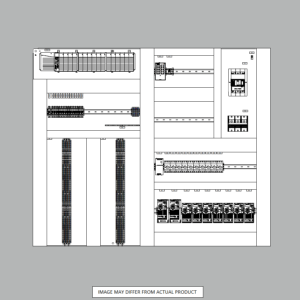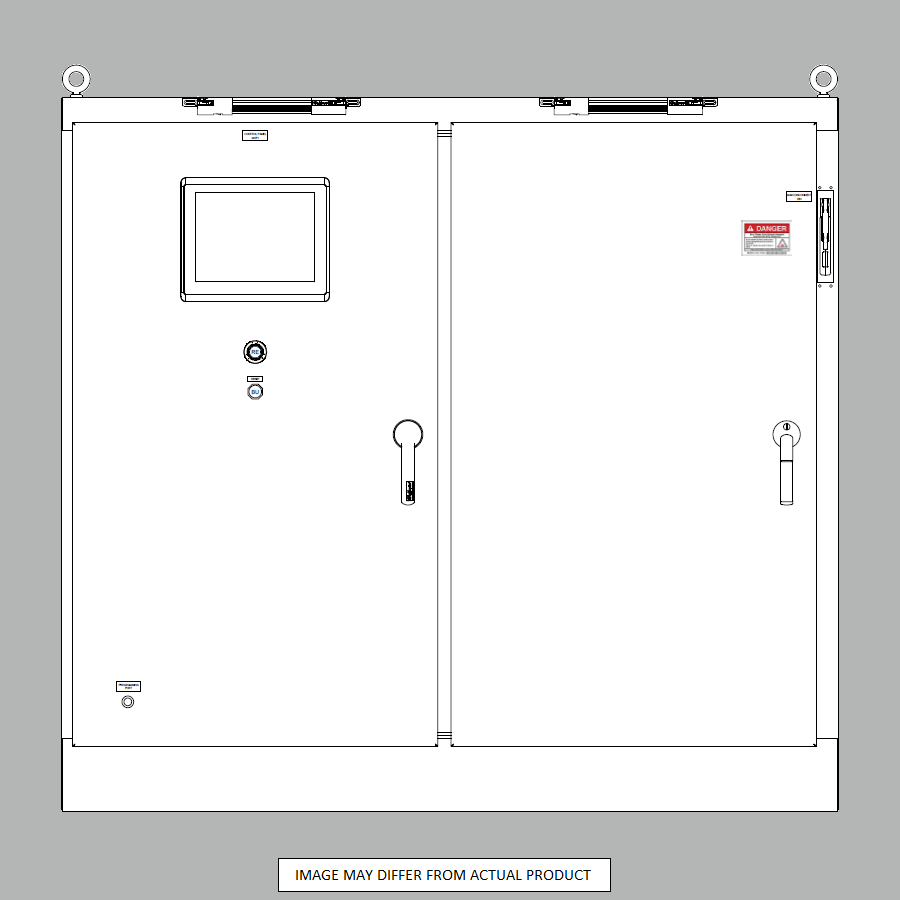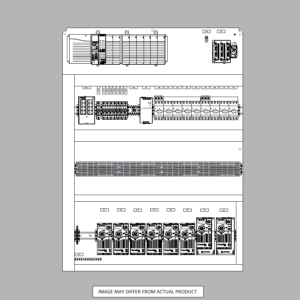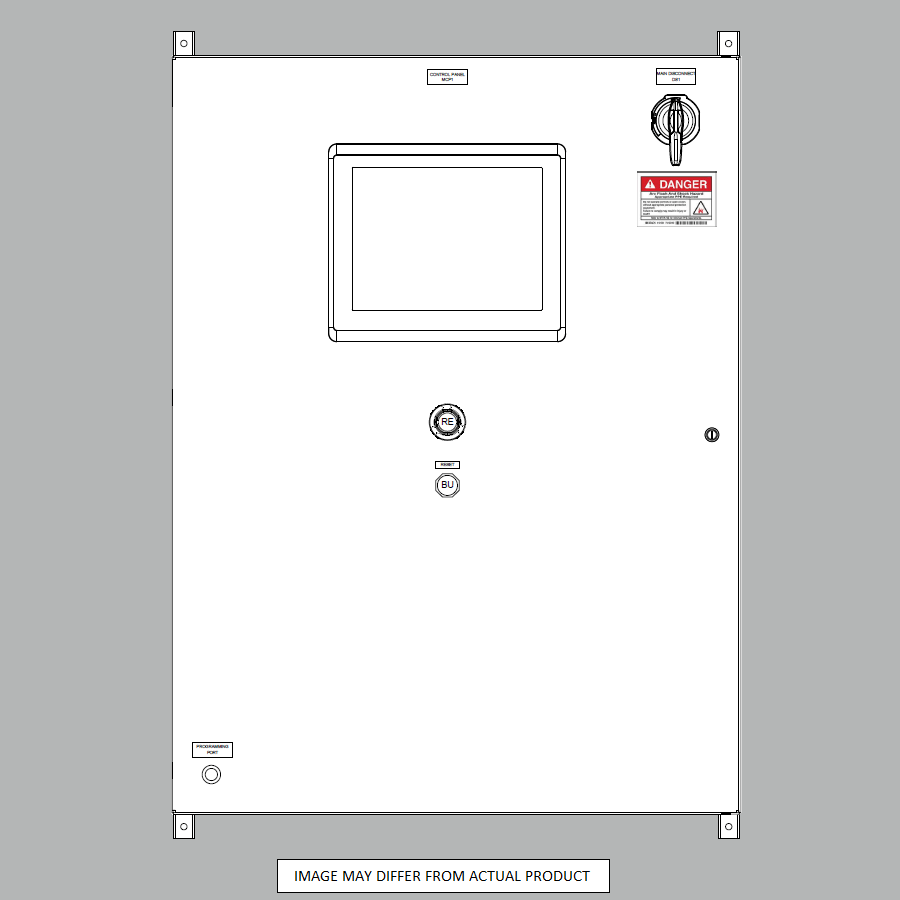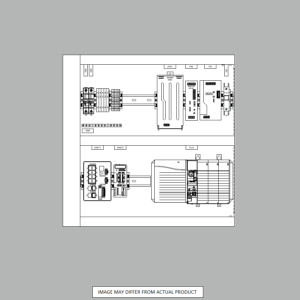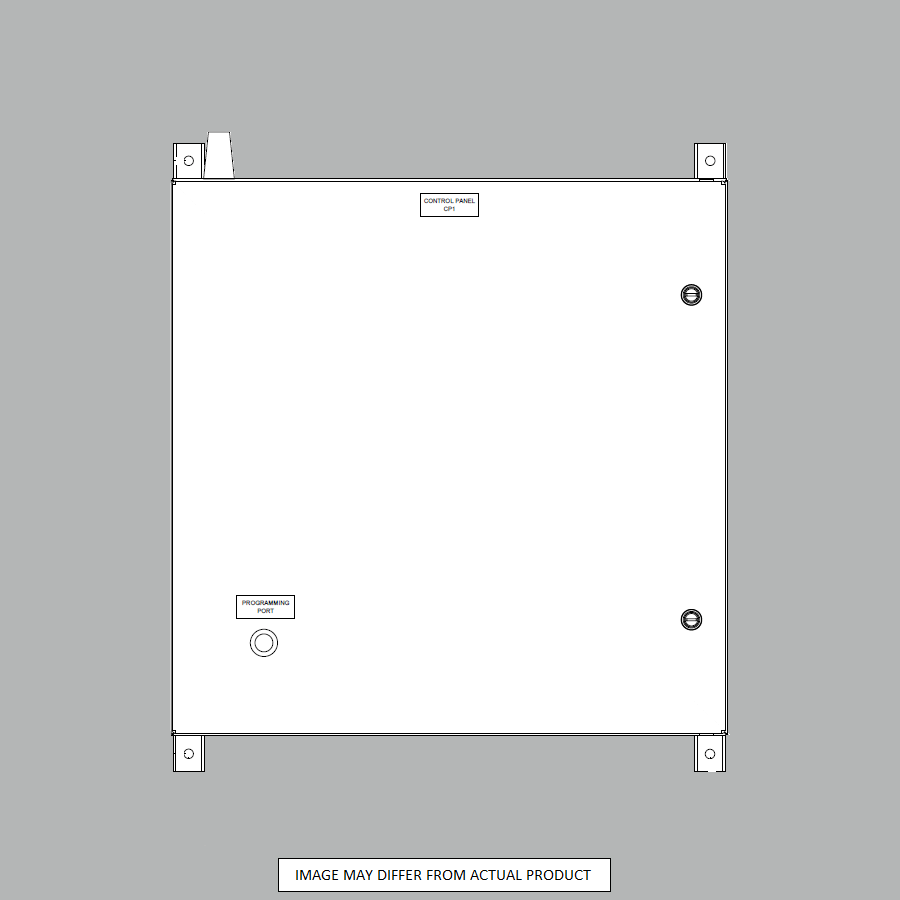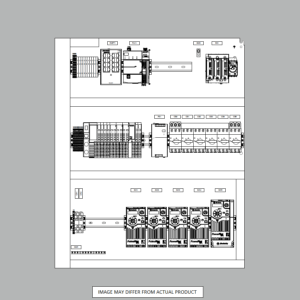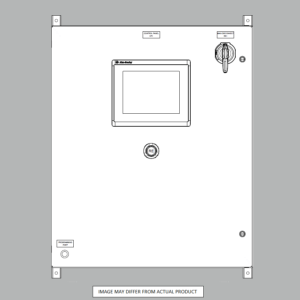Industrial Automation and Control Systems Solution

Industrial automation and control systems have revolutionized the manufacturing industry, bringing unprecedented efficiency, productivity, and precision to production processes. This comprehensive guide delves into industrial automation, exploring its definition, importance, types, technologies, implementation, and challenges.
As we navigate the intricate landscape of automation solutions, we’ll uncover how these systems shape the industry’s future. Let’s your empower businesses to achieve new heights of success.
What is Industrial Automation?
How is industrial automation defined?
Industrial automation refers to using control systems, such as computers and robots, and information technologies to handle different industrial processes and machinery to replace human operators. It is a comprehensive approach to enhancing manufacturing and production processes by integrating various technologies and devices. Industrial automation solutions enable businesses to automate repetitive tasks, monitor and control operations in real-time, and optimize productivity. These systems combine hardware and software components to create a seamless, efficient production environment. These adapts to changing requirements and customer demands.
The core principle of industrial automation is to empower machines and equipment to perform tasks with minimal human intervention. This is achieved by implementing sophisticated control systems that process data, make decisions, and execute actions based on predefined parameters. Because by leveraging automation technologies, manufacturers can significantly reduce human error, increase output consistency, and improve product quality.
Industrial automation eliminates many of the limitations associated with manual labor. This allows 24/7 operations and the ability to handle complex, high-precision tasks. Which can be challenging or impossible for human workers to perform consistently.
What are the key components of industrial automation?
The key components of industrial automation form a comprehensive ecosystem that enables seamless control and monitoring of industrial processes. At the heart of this system are Programmable Logic Controllers (PLCs), which serve as the brain of the automation network.
PLCs process inputs from various sensors and devices, execute programmed logic, and control outputs to actuators and machinery. Sensors play a crucial role in gathering real-time data about the production environment, such as temperature, pressure, and position. At the same time, actuators convert electrical signals into physical actions, manipulating equipment and materials.
Human-machine interfaces (HMIs) provide a critical link between operators and the automated system, allowing monitoring, control, and data visualization. These interfaces enable human operators to interact with the machinery and make informed decisions based on real-time information.
SCADA (Supervisory Control and Data Acquisition) systems extend this capability, offering comprehensive oversight of production facilities. Industrial networks form the backbone of automation systems, facilitating device communication and ensuring smooth data flow.
Additionally, robotics and automated guided vehicles (AGVs) are increasingly integrated into production lines. This further enhances the flexibility and efficiency in manufacturing processes.
How has industrial automation evolved?
The evolution of industrial automation has been a journey marked by continuous technological advancements and shifting paradigms in manufacturing philosophy. Initially, automation was limited to simple mechanical devices and relay-based control systems. The introduction of PLCs in the late 1960s marked a significant milestone, providing a more flexible and programmable approach to automation. As computer technology progressed, the capabilities of automation systems expanded exponentially, enabling more complex control algorithms and data processing.
The advent of digital communication protocols and fieldbus technologies in the 1980s and 1990s revolutionized how devices in an automation system could interact. This paves the way for more integrated and efficient production lines. The turn of the millennium saw the rise of Industrial Ethernet. Also includes the increasing convergence of information technology (IT) and operational technology (OT). This convergence, coupled with advancements in sensor technology, big data analytics, and artificial intelligence, has led to the current era of Industry 4.0 and the Industrial Internet of Things (IIoT). Today’s industrial automation systems are characterized by their ability to collect and analyze vast amounts of data. This enables predictive maintenance, adaptive manufacturing, and unprecedented operational insight.
Why is Industrial Automation Important Especially in Manufacturing?
What are the benefits of implementing industrial automation?
Implementing industrial automation offers many benefits that significantly enhance manufacturing processes and overall business performance. One of the primary advantages of industrial automation is the substantial increase in productivity and efficiency. Automated systems can operate continuously without fatigue, leading to higher output rates and consistent quality. This increased productivity often reduces production costs per unit, improving the manufacturer’s competitive edge. Additionally, automation solutions minimize human error, ensuring greater precision and reliability in product manufacturing.
Another crucial benefit is improving workplace safety. By automating dangerous or repetitive tasks, companies can reduce the risk of workplace accidents and injuries, creating a safer environment for employees. Industrial automation also enables better resource management, optimizing the use of raw materials and energy, reducing waste, and contributing to more sustainable manufacturing practices.
Automated systems provide real-time data collection and analysis capabilities, allowing for informed decision-making and continuous process improvement. This data-driven approach empowers businesses to identify bottlenecks, predict maintenance needs, and adapt quickly to changing market demands, ensuring long-term competitiveness and growth.
How does automation impact productivity and efficiency?
Automation profoundly impacts productivity and efficiency in industrial settings, revolutionizing how manufacturing processes are executed and managed. By integrating automated systems, production lines can operate at higher speeds with greater precision, significantly increasing output volumes while maintaining consistent quality. This heightened efficiency is achieved by eliminating human limitations such as fatigue, inconsistency, and the need for breaks. Automated machinery can work tirelessly around the clock, maximizing production uptime and reducing idle periods.
Moreover, automation enhances process control and optimization. Advanced control systems can make real-time adjustments to manufacturing parameters, ensuring optimal performance under varying conditions. This level of control leads to reduced waste, improved resource utilization, and lower energy consumption. Integrating sensors and data analytics enables predictive maintenance strategies, minimizing unexpected downtime and extending equipment lifespan. Human operators can focus on more complex, value-added activities such as process improvement and innovation by automating routine tasks. This shift boosts overall productivity and contributes to employee satisfaction and skill development, creating a more dynamic and competitive workforce.
What role does industrial automation play in Industry 4.0?
Industrial automation plays a central role in realizing Industry 4.0, serving as the foundation upon which the smart factories of the future are built. Industry 4.0, also known as the Fourth Industrial Revolution, represents the convergence of physical and digital systems in manufacturing. In this context, industrial automation acts as the bridge between traditional manufacturing processes and cutting-edge digital technologies.
Automated systems provide the necessary infrastructure for collecting vast amounts of data from the production floor, which is crucial for implementing advanced analytics, machine learning, and artificial intelligence applications.
Furthermore, industrial automation enables the creation of cyber-physical systems, where physical processes are tightly integrated with computational elements. This integration facilitates real-time monitoring, control, and optimization of production processes on an unprecedented scale.
Automation solutions in Industry 4.0 are characterized by flexibility and adaptability. This allows for rapid reconfiguration of production lines to meet changing market demands. Incorporating Industrial Internet of Things (IIoT) devices and cloud computing enhances connectivity and data sharing across the entire value chain. Starting from suppliers until the end customers. This level of connectivity and automation empowers manufacturers to implement concepts such as digital twins, predictive maintenance, and autonomous decision-making. This drives innovation and competitiveness in the global marketplace.
What Are the Different Types of Industrial Automation Systems and Solutions?
What is fixed automation?
Fixed automation, also known as hard automation, is a type of industrial automation characterized by its rigid, purpose-built design for specific production tasks. This automation is typically employed in high-volume production environments where a single product or a family of similar products is continuously manufactured over an extended period. The key feature of fixed automation is its dedicated equipment and machinery. They are custom-designed to perform a fixed sequence of operations with high efficiency and speed. Fixed automation systems are highly productive for their intended tasks. They still offer limited flexibility in adapting to product variations or changes in production requirements.
The advantages of fixed automation include its high production rates, consistent quality, and low per-unit costs for large production volumes. These systems are often found in industries such as automotive manufacturing. Its assembly lines are configured for specific vehicle models.
However, the initial investment for fixed automation can be substantial, as the equipment is tailored to particular processes. Additionally, the inability to easily modify the production line for different products can be a significant drawback in industries with rapidly changing consumer demands or short product lifecycles.
Despite these limitations, fixed automation remains a viable solution for industries with stable, high-volume production needs where the benefits of speed and efficiency outweigh the need for flexibility.
How does programmable automation work?
Programmable automation represents a more flexible approach to industrial automation, designed to accommodate product types and production sequence variations. At the core of programmable automation are devices such as Programmable Logic Controllers (PLCs) and industrial computers. These can be reprogrammed to control different production processes. This type of automation allows manufacturers to produce batches of other products by changing the machinery’s control program and physical setup. The ability to reprogram the system enables a single production line to handle multiple product variations. This makes it ideal for batch production environments.
The operation of programmable automation systems typically involves a sequence of setup, production, and changeover phases. The equipment is configured and programmed for a specific product batch during setup. The production phase then runs until the batch is completed, after which the system undergoes a changeover to prepare for the next product. While this process offers greater flexibility than fixed automation, the changeover times can significantly impact overall productivity.
Programmable automation balances the high efficiency of fixed systems and the adaptability required in modern manufacturing. It’s particularly well-suited for industries with moderate production volumes and product varieties, such as electronics manufacturing or specialized machinery production, where the ability to reconfigure production lines is crucial for meeting diverse customer needs.
What are the advantages of flexible automation?
Flexible automation represents the pinnacle of adaptability in industrial automation systems, offering significant advantages over fixed and programmable automation. The primary benefit of flexible automation is its ability to quickly and seamlessly switch between different product types with minimal downtime or manual intervention. This agility is achieved through sophisticated control systems, versatile machinery, and advanced software that can rapidly reconfigure production parameters. As a result, manufacturers can respond swiftly to changing market demands, produce various products on the same line, and efficiently manage small batch sizes or even single-piece production runs.
Another key advantage of flexible automation is its continuous improvement and optimization capacity. These systems often incorporate advanced sensors and data analytics capabilities, enabling real-time monitoring and adjustment of production processes. This data-driven approach allows for ongoing refinement of manufacturing techniques, improving quality, reducing waste, and enhancing overall efficiency.
Flexible automation also supports the implementation of modular production concepts, where different manufacturing cells can be easily rearranged or scaled to meet evolving production needs. This scalability and adaptability make flexible automation particularly valuable in industries with rapidly changing product lines, such as consumer electronics or fashion, where the ability to introduce new products or variations quickly is crucial for maintaining competitiveness.
What is integrated automation?
Integrated automation represents a holistic approach to industrial automation. This type of automation goes beyond individual machines or production lines. This encompasses the entire manufacturing ecosystem, including supply chain management, quality control, and even business processes. The key principle of integrated automation is the seamless flow of information and materials across different stages of production and business operations, enabled by advanced communication networks and software systems.
In an integrated automation setup, all elements of the production process are coordinated and synchronized. Starting from raw material handling to finished product delivery. This integration extends to enterprise resource planning (ERP) systems, manufacturing execution systems (MES), and customer relationship management (CRM) platforms. This creates a comprehensive digital thread throughout the organization.
The advantages of integrated automation include improved visibility across the entire production process, enhanced decision-making capabilities based on real-time data, and the ability to adapt to changes in demand or production requirements quickly. By breaking down silos between different departments and processes, integrated automation enables manufacturers to achieve new levels of efficiency, quality, and responsiveness, positioning them well for the challenges of modern, globalized markets.
What Technologies Are Used in Industrial Automation?
How do Programmable Logic Controllers (PLCs) function?
Programmable Logic Controllers (PLCs) are the backbone of modern industrial automation systems, serving as the central control units for a wide range of manufacturing processes. These robust, computer-based devices are designed to operate reliably in harsh industrial environments, executing programmed instructions to control machinery and processes. The fundamental operation of a PLC involves a continuous cycle of reading inputs, executing the control program, and updating outputs. This cycle, known as the scan cycle, occurs many times per second. This ensures real-time control and responsiveness to changing conditions on the production floor.
PLCs are programmed using specialized languages such as ladder logic, function block diagrams, or structured text, which allow engineers to define the logical operations and control sequences required for specific manufacturing tasks. These programs can be easily modified and updated, providing the flexibility to adapt to new production requirements or process improvements. PLCs interface with a wide array of input devices, including sensors, switches, and other PLCs, to gather data about the state of the production process. Based on this input and the programmed logic, PLCs control output devices such as motors, valves, and indicators to manage the physical aspects of the manufacturing process. The modular nature of PLCs allows for easy expansion and integration with other automation components, making them a versatile and scalable solution for industrial control applications.
What role do sensors and actuators play?
Sensors and actuators are crucial components in industrial automation systems, serving as the control system’s eyes, ears, and hands. Sensors are devices that detect and measure physical properties in the environment, such as temperature, pressure, position, or flow rate. They convert these physical phenomena into electrical signals that the control system can interpret. In an automated manufacturing environment, sensors provide real-time feedback about the state of processes and equipment, enabling precise monitoring and control. This continuous data stream is essential for maintaining quality, ensuring safety, and optimizing production efficiency.
Conversely, actuators are devices that convert electrical signals from the control system into physical actions or movements. They are responsible for executing the commands issued by PLCs or other control devices and manipulating the physical aspects of the manufacturing process. Common actuators include electric motors, pneumatic cylinders, and hydraulic pistons. These devices control everything from robotic arms’ movement to valves’ opening and closing. The interplay between sensors and actuators creates a closed-loop control system, where the control system continuously adjusts the actuators based on sensor feedback to maintain desired process parameters. This dynamic interaction is fundamental to achieving the precision, repeatability, and efficiency that are hallmarks of modern industrial automation systems.
How are Human-Machine Interfaces (HMIs) utilized?
Human-machine interfaces (HMIs) play a crucial role in industrial automation. It provides a visual and interactive link between operators and automated systems. These interfaces present complex process information in an easily understandable format. Because this allows human operators to monitor, control, and interact with the manufacturing process effectively. HMIs typically consist of touchscreens or computer displays that show real-time data, system status, alarms, and historical trends. They enable operators to input commands, adjust parameters, and respond to system alerts, facilitating efficient production process management.
Modern HMIs are increasingly sophisticated, incorporating advanced graphics, customizable dashboards, and intuitive navigation systems to enhance user experience and operational efficiency. They often integrate with other automation components, such as PLCs and SCADA systems, to provide a comprehensive view of the production facility. This integration allows centralized control and monitoring of multiple processes from a single interface. Additionally, HMIs are evolving to support remote access capabilities, enabling operators and managers to monitor and control processes from off-site locations via secure networks. This feature has become particularly valuable in recent years, supporting flexible working arrangements and enabling rapid response to production issues even when personnel are not physically present.
What is the importance of SCADA systems?
Supervisory Control and Data Acquisition (SCADA) systems are integral to modern industrial automation. It provides a comprehensive framework for monitoring and controlling large-scale processes across multiple sites. SCADA systems collect and process real-time data from various sensors and devices distributed throughout a manufacturing facility or geographically dispersed locations. This centralized data collection gives operators a holistic view of the operation. This leads to informed decision-making and rapid response to changing conditions. SCADA systems are particularly crucial in industries such as oil and gas, water treatment, and power distribution. These industries has widely dispersed assets that requires constant monitoring.
SCADA systems are important because of their ability to enhance operational efficiency and improve process reliability. It also ensures safety in complex industrial environments. These systems provide advanced alarming capabilities, alerting operators to potential issues before they escalate into critical problems. Historical data logging and trend analysis features of SCADA systems enable continuous process improvement and predictive maintenance strategies, reducing downtime and optimizing resource utilization.
SCADA systems often incorporate sophisticated security measures to protect critical infrastructure from cyber threats, an increasingly important consideration in the age of interconnected industrial systems. As industrial automation continues to evolve towards more intelligent and autonomous operations, SCADA systems are adapting to incorporate advanced analytics, machine learning, and cloud integration, further enhancing their value in modern manufacturing and process control applications.
How Is the Industrial Automation Process Implemented?
What are the key steps in implementing an automation system?
Implementing an industrial automation system is a complex process that requires careful planning and execution. The first key step is conducting a thorough assessment of the current production processes and identifying areas where automation can bring the most significant benefits. This involves analyzing workflow, production bottlenecks, and potential safety hazards. Once the scope is defined, the next step is to develop a detailed project plan outlining objectives, timelines, and resource requirements. This plan should also consider integrating new automation systems with existing equipment and processes to ensure seamless operation.
Following the planning phase, selecting and procuring appropriate automation technologies is crucial. This involves choosing the right combination of hardware and software components, such as PLCs, sensors, actuators, and control software, that best fit the specific requirements of the production environment. The implementation process then moves to the design and engineering phase, where detailed system architectures and control strategies are developed.
This is followed by the physical installation of equipment, programming of control systems, and integration of various components. Throughout the implementation, rigorous testing and commissioning are essential to ensure the automated system meets all specified requirements and safety standards. Finally, comprehensive training for operators and maintenance personnel is critical to ensure effective operation and maintenance of the new automation system.
How is a feasibility study conducted?
A feasibility study is a critical preliminary step in implementing industrial automation evaluating the viability and potential benefits of the proposed automation project. The study begins by clearly defining the project’s objectives and scope and identifying specific processes or areas targeted for automation. A comprehensive analysis of the current production environment is conducted, including a detailed examination of existing workflows, equipment, and performance metrics. This analysis helps identify inefficiencies, bottlenecks, and areas where automation can significantly improve.
The feasibility study also involves a thorough technical assessment. This is to determine the most appropriate automation technologies and solutions for the specific production environment. This includes evaluating different automation options and considering factors such as compatibility with existing systems, scalability, and potential for future expansion. A crucial aspect of the feasibility study is the financial analysis, which involves estimating the implementation costs, including equipment, software, installation, and training, and projecting the expected return on investment (ROI). This financial assessment typically includes calculating potential productivity gains, quality improvements, and cost savings over time.
Additionally, the study should consider any possible risks or challenges associated with the automation project. Including disruptions to ongoing operations during implementation or the need for workforce retraining. The outcome of a well-conducted feasibility study provides decision-makers with a clear understanding of the potential benefits, costs, and risks associated with the automation project, enabling informed decisions on whether and how to proceed with implementation.
What is involved in system design and integration?
System design and integration are crucial phases in implementing industrial automation. This involves the detailed planning and execution of how various automation components will work together to achieve the desired production goals. The system design process begins with a comprehensive analysis of the production requirements, including throughput targets, quality standards, and operational constraints. Based on this analysis, automation engineers develop a detailed system architecture that outlines how different components – such as PLCs, sensors, actuators, and HMIs – will be interconnected and coordinated. This design phase also involves creating control algorithms and programming logic that will govern the operation of the automated system.
The integration phase combines the various hardware and software components into a cohesive, functioning system. This often involves interfacing new automation equipment with existing machinery and systems. This requires careful planning to ensure compatibility and seamless operation. Integration also encompasses the implementation of communication protocols and networks that enable different parts of the system to exchange data and commands effectively.
A critical aspect of system integration is ensuring that all components work together harmoniously, not just in isolation. This often involves extensive testing and debugging to identify and resolve conflicts or performance issues. Additionally, the integration process must consider scalability and future expandability. This allows the system to adapt to changing production needs over time. Successful system design and integration result in a robust, efficient automation solution that meets current production requirements while providing flexibility for future enhancements.
How is testing and commissioning carried out?
Testing and commissioning are critical final stages in implementing industrial automation systems. This ensures all components function correctly and meet the specified performance criteria. The testing phase typically begins with individual component testing, where each equipment, sensor, and control element is checked for proper operation. This is followed by subsystem testing, where groups of interconnected components are evaluated as functional units. The testing process then progresses to full system integration testing, where the entire automated system is operated under various conditions to verify its overall performance, reliability, and safety features.
Commissioning involves systematically bringing the automated system into full operational status. This phase includes fine-tuning system parameters, calibrating sensors and instruments, and optimizing control algorithms for peak performance. During commissioning, the system undergoes rigorous tests under real or simulated production conditions to meet all design specifications and operational requirements. This often involves running the system through various scenarios. This includes normal operations, fault conditions, and emergencies, to verify proper response and recovery. An essential aspect of commissioning is validating safety systems and emergency shutdown procedures. Once the system passes all tests and operates as intended, comprehensive documentation is prepared, including operational manuals, maintenance procedures, and performance baselines. The final step in commissioning is typically a formal handover to the operations team. It is being accompanied by thorough training to ensure they can effectively manage and maintain the new automated system.
What Are the Challenges in Industrial Automation?
How does automation affect the workforce?
The impact of automation on the workforce is a complex and often contentious issue in industrial settings. On one hand, automation can lead to job displacement. This is particular for roles involving repetitive or routine tasks that can be easily automated. This shift can reduce the workforce in certain areas, potentially causing economic and social challenges for affected workers and communities.
However, automation creates new job opportunities, especially in system design, implementation, maintenance, and data analysis. These new roles often require higher skill levels and technical expertise, leading to a shift in work rather than a straightforward reduction in jobs.
Automation also transforms existing job roles, requiring workers to adapt and acquire new skills. Many employees transition from manual operators to system supervisors or technicians, overseeing and maintaining automated systems. This shift often necessitates ongoing training and skill development programs to align the workforce with technological advancements.
Additionally, automation can improve workplace safety by removing humans from hazardous environments. This reduces the risk of injuries associated with repetitive tasks. While the overall impact of automation on employment levels remains a subject of debate, it’s also clear that it significantly alters the landscape of industrial work. It demands a proactive approach to workforce development and transition management to ensure that the benefits of automation are balanced with the needs of the human workforce.
What are the cybersecurity concerns in automated systems?
Cybersecurity has become a paramount concern in industrial automation as systems become increasingly interconnected and reliant on digital technologies. Automated systems, particularly those connected to networks or the Internet, are vulnerable to various cyber threats. This includes malware attacks, unauthorized access, and data breaches. These risks are especially critical in industrial settings where a cyberattack could disrupt production, compromise safety systems, or lead to significant financial losses. Integrating legacy systems with modern, network-enabled devices often creates additional vulnerabilities, as older equipment may lack robust security features.
Addressing cybersecurity in automated systems requires a multi-faceted approach. This includes implementing strong access controls, regularly updating and patching software, encrypting data transmissions, and segmenting networks to isolate critical systems. Continuous monitoring and threat detection systems are essential to promptly identify and respond to potential security breaches.
Employee training in cybersecurity best practices is also crucial, as human error remains a significant factor in many security incidents. As industrial automation systems increasingly adopt cloud computing and Internet of Things (IoT) technologies, the cybersecurity landscape becomes even more complex. It now necessitating ongoing investment in security measures and expertise. Balancing the benefits of connectivity and data-driven operations with the need for robust cybersecurity remains one of the most significant challenges in modern industrial automation.
Ready to revolutionize your manufacturing operations with industrial automation?
At Automation Ready Panels, we bring years of expertise in designing and implementing cutting-edge automation solutions that transform your production floor. From PLCs and SCADA systems to seamless HMI integration, we deliver comprehensive automation solutions tailored to your needs.
Don’t let manual processes hold you back. Our team of automation specialists will:
- Conduct thorough feasibility studies to identify your best automation opportunities
- Design and integrate custom automation systems that boost productivity
- Ensure cybersecurity at every level of implementation
- Provide complete training and support for your workforce
Take the first step toward Industry 4.0. Contact Automation Ready Panel today for a consultation. Discover how we can help you achieve unprecedented efficiency in your manufacturing processes.
Click here to contact Automation Ready Panels and start your automation journey.
Transform your operation. Automate with confidence. Partner with Automation Ready Panels.
-
Large Process Automation: Panelview 5000, ControlLogix 5580
$24,073.00 Select options -
Small Process Automation: Panelview 5000, ControlLogix 5580
$20,321.00 Select options -
Small Process Automation: ControlLogix 5580, UPS Battery Backup, Cellular Modem
$18,999.00 Select options -
Advanced Automation: Panelview 5000, Safety CompactLogix 5380
$10,269.00 Select options

